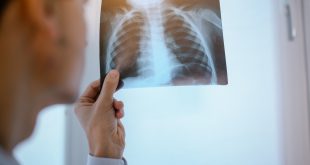By Sean Tarry
When it comes to work and research around DNA barcoding, you’re not likely to find someone with as much experience, or someone who’s made as much of an impact by linking genetics information, as Richard Summerbell. His achievements within the STEM field have been impressive and have consistently contributed toward the advancement and development of scientific research and application. And, although his career has spanned the better part of four decades, his penchant for figuring out how the biological world works continues to this day.
Throughout his career, Summerbell has executed government-funded work for the Ontario Ministry of Health and the Dutch Ministry of Education and more recently with privately owned Canadian company, Sporometrics Inc. The laboratory provides microbiological testing services for environmental matrices including air, fluids and solid materials. It also supports Summerbell’s most recent research, which leverages DNA barcoding to study the patterns of some populations of fungi that infect human skin. Summerbell explains, “We’ve been tracking a good-sized outbreak in western Toronto, Brampton and Mississauga. It’s all made possible by DNA barcoding because it’s not really an organism that we can recognize reliably just using the microscope, as it resembles too many other things.
“It’s a major nuisance that seems to have started in India in about 2017 or 2018,” he says, explaining that it has proven to be resistant to common antifungal drugs. “It’s a dermatophyte fungus that has an entity that was first described as a genetic group of an existing species. But it now has its own name: Trichophyton indotineae.” The fungus causes a serious skin rash, usually on the upper body.
Not only has Summerbell made his mark within the STEM community, he’s also served as a social trailblazer of sorts. A gay scientist, he belonged to the campus Gay Society at the University of British Columbia back in 1977 and was president of a group that called themselves the Gay People of UBC. He describes the latter group as an “activist” organization that was opposed to the repression and discrimination at the time.
He noticed changes after 1978, following the assassination of Harvey Milk, an openly gay American politician, and other civil rights events. Summerbell credits his own relatively barrier-free career to supportive and protective colleagues.
“Canada is quite a different place today compared to when I was starting my career,” he explains. “The challenges that people face today are, in most cases, perhaps not as intense as they were 30 years ago. However, that’s not to say that challenges aren’t present. There are sometimes oppressive, systemic forces out there that daunt people from manifesting their interest in something like science. For true diversity to exist, it is important to support people of minority groups and offer the same opportunities to everyone.”
 BioLab Business Magazine Together, we reach farther into the Canadian Science community
BioLab Business Magazine Together, we reach farther into the Canadian Science community





